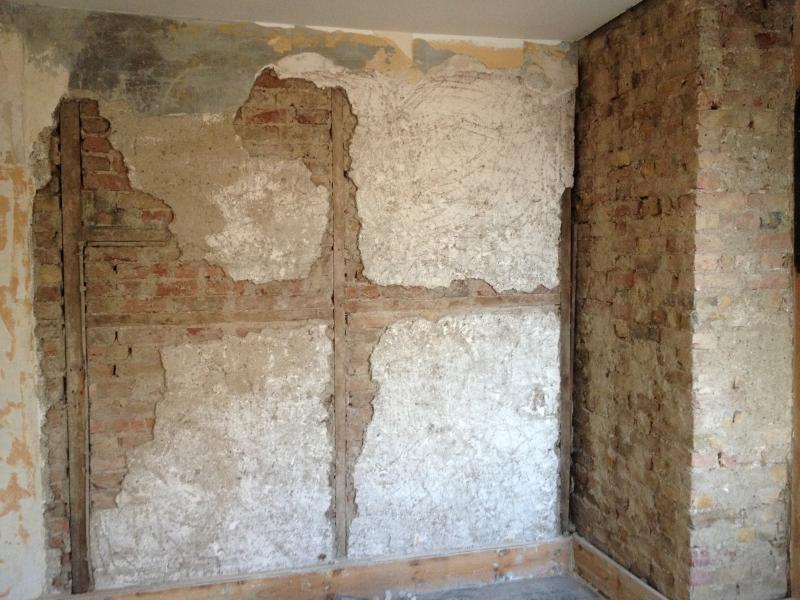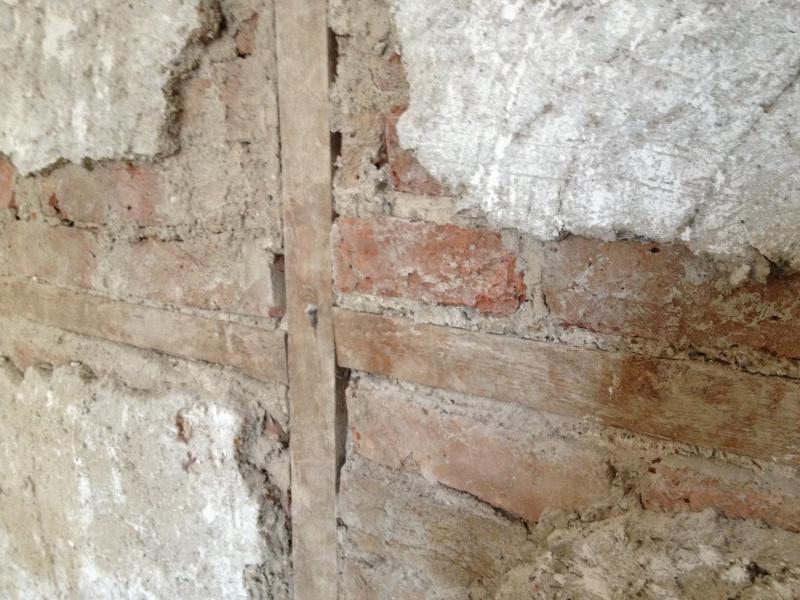Hi, just like your opinions on how to tackle this wall.
Firstly I'm inclined to want to avoid using plaster board, on account of the building being victorian and I prefer the look, finish of plaster.
This is an internal wall you're looking at here, It seems to have some kind of lime based plaster with some kind of hair mixed into the render. (Not horsehair, its alot softer)
I'm wondering if
A, should use hardwall to fill in the gaps, bringing it flush to the existing plaster.
B, strip it all off and start again, I'd rather avoid doing this on account of how much rubble it creates and not owning a car, makes it a chore disposing of the rubble... If at the end of the day it will create a better job, then so be it..
C:would you use hard wall or a cement/ sand render mix... which between the two works ut cheaper, gives a better base for the scrim.
D.
I was thinking of tackling the timber framing within the walls by cutting strips of plaster board and nailing with Gal clump nails to the timbers. I noticed when stripping the wall, the existing plaster just fell off, & having searched on this forum, understand why...
I've not done this before, I'm a keen learner and if I mess up, well, I'll just have to take it all off and learn the hard way... but I want to give it a go and would very much appreciate learning from those with experience.
Thank you...
Firstly I'm inclined to want to avoid using plaster board, on account of the building being victorian and I prefer the look, finish of plaster.
This is an internal wall you're looking at here, It seems to have some kind of lime based plaster with some kind of hair mixed into the render. (Not horsehair, its alot softer)
I'm wondering if
A, should use hardwall to fill in the gaps, bringing it flush to the existing plaster.
B, strip it all off and start again, I'd rather avoid doing this on account of how much rubble it creates and not owning a car, makes it a chore disposing of the rubble... If at the end of the day it will create a better job, then so be it..
C:would you use hard wall or a cement/ sand render mix... which between the two works ut cheaper, gives a better base for the scrim.
D.
I was thinking of tackling the timber framing within the walls by cutting strips of plaster board and nailing with Gal clump nails to the timbers. I noticed when stripping the wall, the existing plaster just fell off, & having searched on this forum, understand why...
I've not done this before, I'm a keen learner and if I mess up, well, I'll just have to take it all off and learn the hard way... but I want to give it a go and would very much appreciate learning from those with experience.
Thank you...



